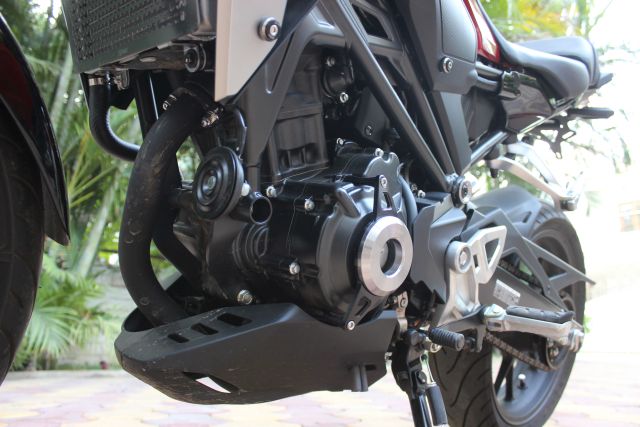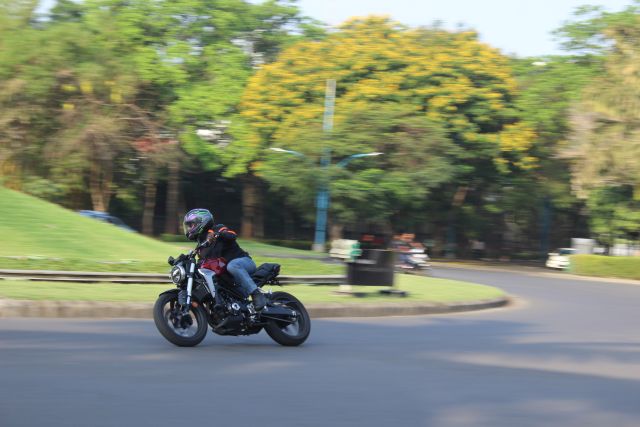Performance
The Honda CB300R is powered by a 286-cc, liquid-cooled single that is suspended from a twin-spar perimeter frame constructed of tubular steel sections, rather than aluminium beams, to keep costs down. The four-valve DOHC powerplant makes 30.5 PS at 8,000 rpm and 27.4 Nm of torque at 6,500 rpm, and sounds smooth and relaxed through the rev range.

The bike was quick off the line, thanks to a generous helping of torque upwards of 4,000 rpm, combined with well-spaced gear ratios and a light 147-kg kerb weight, and was eager to slice through Pune’s early morning traffic without a second thought. I especially liked the linear feel of the cable-operated throttle, which intuitively gives you the sense that your right wrist is directly connected to the rear wheel, with no surprises or jerks at any throttle position. The slick-shifting six-speed gearbox is a joy to use and combines smooth, seamless shifts with a positive click to let you know that the next cog has been engaged. The engine is happiest between 4,000 and 6,000 rpm, where you will mostly find yourself when riding through the city, and there is enough torque on tap to cruise past slower vehicles with a twist of the wrist. I registered 3,000 rpm at 50 km/h in sixth gear and 6,000 rpm at 100 km/h, with absolutely no vibrations making their way through to me, and I expect the top speed to be in the region of 140 to 150 km/h.
Ergos, Handling and Safety
The saddle is nice and firm, with enough space to move around on, while the somewhat rear-set foot-pegs and wide handlebar put the rider in a slightly aggressive, yet extremely comfortable riding position. The Honda CB300R feels extremely nimble and light on its feet, and sudden changes of direction pose no challenge to this little Honda. The well-damped suspension felt soft enough to be comfortable over bumps, while still providing good feedback to the rider.

A 296-mm petal disc is gripped by a radially-mounted four-piston Nissin caliper up front, while at the rear is a 220-mm disc and single-piston caliper. Braking feel and feedback are excellent, and the standard ABS is helped along by an IMU (Inertial Measurement Unit) that measures chassis pitch to keep both wheels on the ground under hard braking. This system may not be as advanced as the six-axis, lean-sensitive units on modern sport bikes, but it is definitely the most advanced ABS on offer in this segment.


Leave a Reply